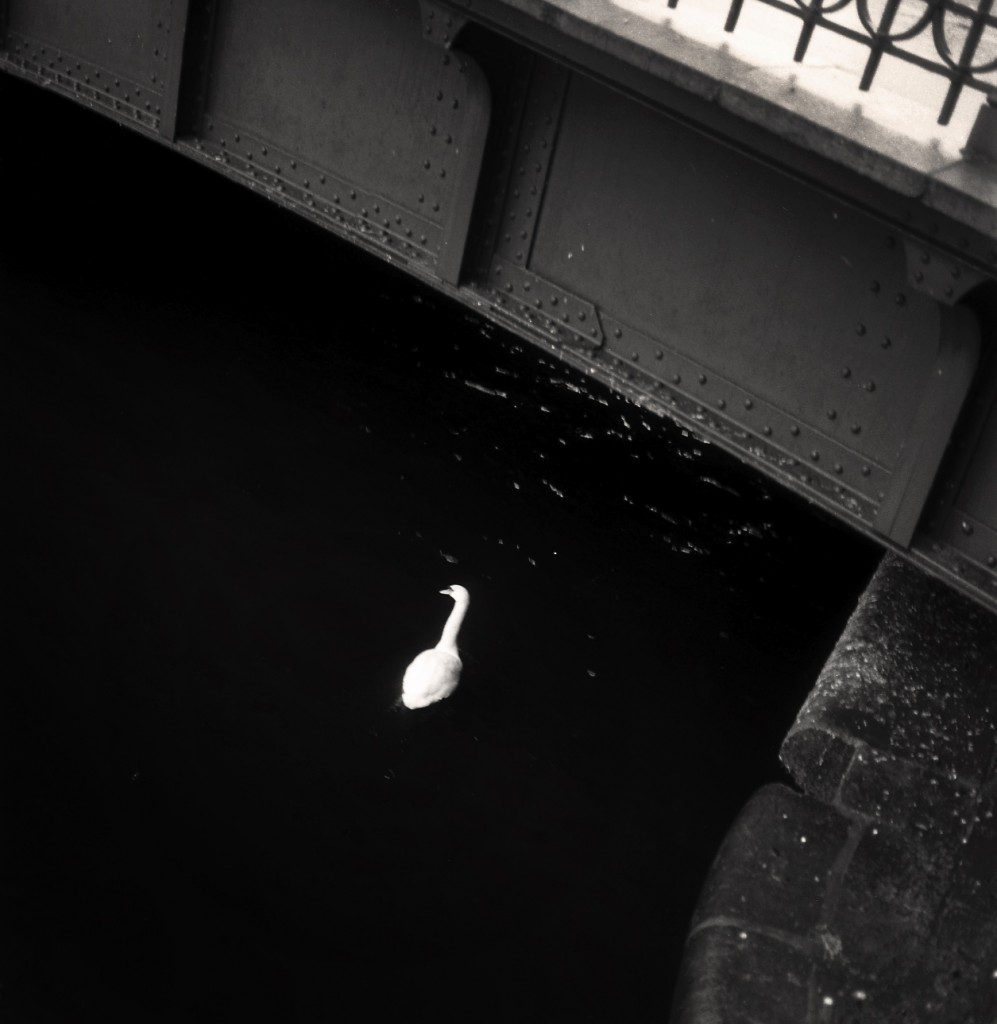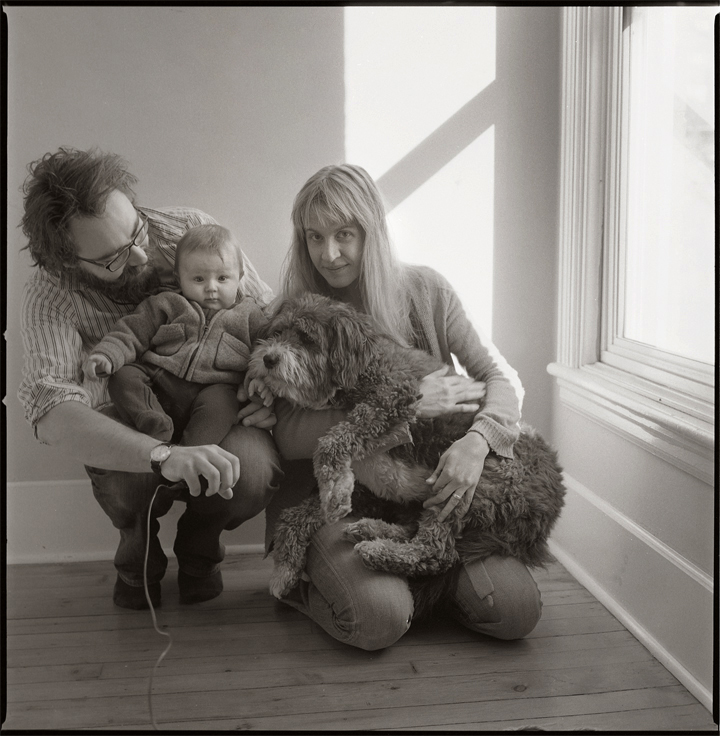 John Haney, Weidendammer Bridge, Berlin, November 2004
John Haney, Weidendammer Bridge, Berlin, November 2004
Amanda Jernigan and her husband John Haney collaborate here on a gorgeous photograph and poem combination, the photograph providing the inspiration or focal point for the poem which is an irregular sonnet, a gorgeous thing, that builds its power through a series of contrasts, contradictions, and denials: delivered/abandoned, surreptitious/scandalously bright, dying swans sing sweetest/swans aren’t known to sing, never spoken/never taken back, (white — note: a word not used in the poem)/black. Read this way, you can see how achingly poignant each of the contrasts or denials is, sad, beautiful reversals. Even the poet reverses herself and seems to begin to disappear in that amazing double negative “we could hardly feign not having seen it,” or near double negative. In the middle, the poem offers a dense run of literary references, other poems and books, swans, sirens, all concentrated in the moment when the vision of the glowing swan (see the photo; the swan has an aura) disappears under the dark bridge. Note also the rhymes leading to the end: Brewer/truer and sirens/silent and the gorgeous back/black that bookends the last line.
Amanda Jernigan earlier contributed five poems to Numéro Cinq that went into her collection Groundwork which NPR picked as one of the top five poetry books of 2011.
dg
§
Reflection
The swan slipped under the bridge — a palmed card,
a dropped coin, a swaddled child, delivered
or abandoned — a surreptitious movement,
but scandalously bright, and we could hardly
feign not having seen it. I thought about
Macpherson’s swan, white habited; and Baudelaire’s,
an exile from its lac natal; the snow-
white somnatational swans of Outram’s
‘Ms Cassie by Tarnished Water’: dying
swans sing sweetest, Brecht maintained. But Brewer
tells us swans aren’t known to sing. The sirens,
too, were silent, according to Kafka. Truer
words were never spoken, never taken
back. In your negative the swan is black.
—Amanda Jernigan
——————–
Amanda Jernigan is a poet, playwright, essayist, and editor. Her first book, Groundwork: poems, was published by Biblioasis in 2011; her second book, All the Daylight Hours, is forthcoming from Cormorant, this spring. She is the editor of The Essential Richard Outram (Porcupine’s Quill, 2011), and is currently at work on a critical edition of Outram’s collected poems.
John Haney is a photographer, sculptor, and wood engraver. His work has been exhibited in public and private galleries in Canada and abroad. He is represented by the Christina Parker Gallery in St. John’s, Newfoundland, and in Europe by Emerson Gallery Berlin. He is currently at work on a series of black-and-white contact prints entitled Common Prayer (http://johnhaney.ca/common_
Amanda and John are sometime, amateur letterpress printers. Since 2000, they have collaborated annually on a hand-printed pamphlet or broadside, featuring one of Amanda’s poems and one of John’s photographs, issued in a small edition under their imprint Daubers Press. ‘Reflection’/Weidendammer Bridge … is in that tradition — the first of their collaborations to make its debut in digital form!
Amanda and John live in Hamilton, Ontario, with their young son Anson, and their loyal dog Ruby, of previous Numéro-Cinq fame: (http://numerocinqmagazine.

Thanks for these, Amanda and John and dg.
Ooh how I love black-and-white photography and poetry. This is particularly gorgeous. The exposure is so perfect! And the verse is like a meditation. Absolutely lovely.